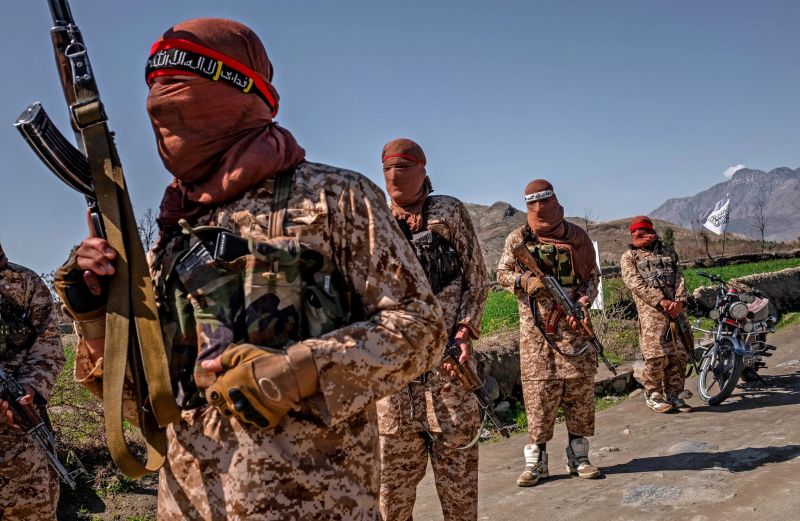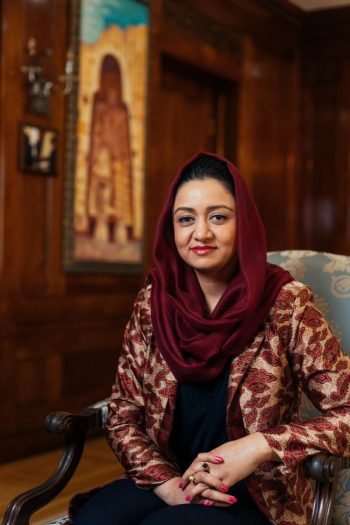
This past week saw a spate of violence as the Biden administration began its withdrawal from Afghanistan. On Friday, a truck laden with explosives detonated south of Kabul, killing 27. On Saturday, a professor at Kabul University was fatally shot, and that same day Kandahar airfield came under rocket attack.
Last month, when President Biden first announced the withdrawal, I was having lunch with the Afghan ambassador to the United States, Roya Rahmani. I fought in Afghanistan and over the past couple of years Ambassador Rahmani and I have become friends, periodically catching up over a meal.
Her phone was ringing as we stepped into the dining room at her residence in Washington. With typical Afghan hospitality, we sat down to what turned out was a meal for one, as she would not be eating, in observance of Ramadan. Then, as a steward brought my first course, her phone rang again. This call she had to take. It was the foreign minister. She excused herself as the two of them crafted a statement for her to deliver to the Biden administration. So I sat alone, picking at the vegetables on my plate, in what felt like a dream.
Two days later, I went for an early-morning run with an old friend, whom I’ll call Jack. The two of us had served in Special Operations together, where he still works. Jack has spent so much time in Afghanistan that he holds a tribal membership and, as we passed by the fenced-off Capitol and down along the National Mall, I recounted my lunch, how odd that moment felt, and said, “I can’t believe that’s going to be my memory of how it all ended.”
Jack laughed, and with a doomy pragmatism, predicted that the war wasn’t going to end with a salad at the ambassador’s residence and a news conference by the president; it would end as it began: in blood.
Jack reminded me that removing the 3,500 American troops from Afghanistan is, in military terms, what’s called a “fighting withdrawal,” in which an army leaves the field while still in contact with the enemy. Of all the maneuvers an army can perform (advance, flank, defend, etc.), it is widely accepted that a fighting withdrawal is the most complex and difficult because you are neither attacking nor defending, and so are exceedingly vulnerable.
Unlike the withdrawal from Iraq, in which U.S. troops could drive through the desert into Kuwait as they did in 2011, and unlike the Soviet withdrawal in 1989, in which they could drive across a then-shared border, U.S. troops are currently marooned in Afghanistan, reliant on three principal U.S.-controlled airstrips (Bagram, Jalalabad, Kandahar), making their journey home all the more perilous.
Afghans have a very long memory. During my service there, elders often pointed not just to where they’d fought the Soviets, or to where their great-great-grandfathers had fought the British, but often even to the ruins of the fortresses where their ancestors had fought the armies of Alexander the Great.
Perhaps the most famous fighting withdrawal in Afghan history came at the end of the First Anglo-Afghan War in 1842. That conflict began with a resounding British victory, in 1839, and the installation of a sympathetic government. But that government collapsed, leading to an uprising in Kabul.
Like the U.S. Army today, the British found themselves geographically marooned, and secured favorable terms for withdrawal from their adversaries, but when their column — around 16,500 soldiers and camp followers — left the gates of Kabul on their way to Jalalabad, the Afghans descended, slaughtering all except one: an army surgeon, William Brydon. When Dr. Brydon — the original Lone Survivor — arrived on horseback at the gates of Jalalabad, near death himself, with part of his skull sheared off, a sentry asked him where the army was, to which he responded, “I am the army.”

Although the Soviet army avoided this fate a century later, the regime it left behind fared little better. Mohammad Najibullah, an infamous torturer and former head of Afghanistan’s intelligence service, the KHAD, as well as a K.G.B. agent, had been installed by the Soviets as president and was able to hold onto power for more than two years after they left. As the Soviet Union collapsed, its financial support of his regime evaporated. Mr. Najibullah was soon deposed and eventually found himself at the end of a Taliban executioner’s rope when they took control of Kabul. Which raises the question of how long the United States will continue to support the government of President Ashraf Ghani of Afghanistan after our withdrawal. One year? Two? Three? What is the “decent interval,” to borrow Nixon’s phrase from our calamitous withdrawal from Vietnam?
As Jack and I ran, we discussed this history and other complex aspects of America’s withdrawal: how many senior members of the Afghan government possessed dual citizenship and would likely depart the country, leaving behind less capable subordinates to fill critical positions; the challenges of collapsing more remote outposts; and whether the State Department would grant visas to those Afghans who’d thrown their lot in with their government and us.
Jack concluded, “America might be done with Afghanistan, but Afghanistan isn’t done with America.” In his view, my lunch at the ambassador’s residence wouldn’t mark the end of the war at all. Not for me. Not for anyone.
After finishing her call, the ambassador apologized for being so inattentive. She confessed that she had an agenda item we hadn’t gotten to discuss. She wanted some advice as she was considering writing a book. Like those of the millions of Afghan girls we are now in the process of abandoning, her story is marked by war and overcoming an oppressive version of Islam championed by the Taliban, a personal journey that leads to a final chapter in which she is appointed as the first female Afghan ambassador to the United States. My advice to her was to keep notes, and I told her that she might not be ready to write that final chapter yet. Because she may not be remembered most for having been her government’s first female ambassador, but rather for having been, as it related to America, its last.
Elliot Ackerman, a contributing opinion writer, is the author, most recently, of the novel Red Dress in Black and White and 2034. He is a former Marine and intelligence officer who served five tours of duty in Iraq and Afghanistan.
